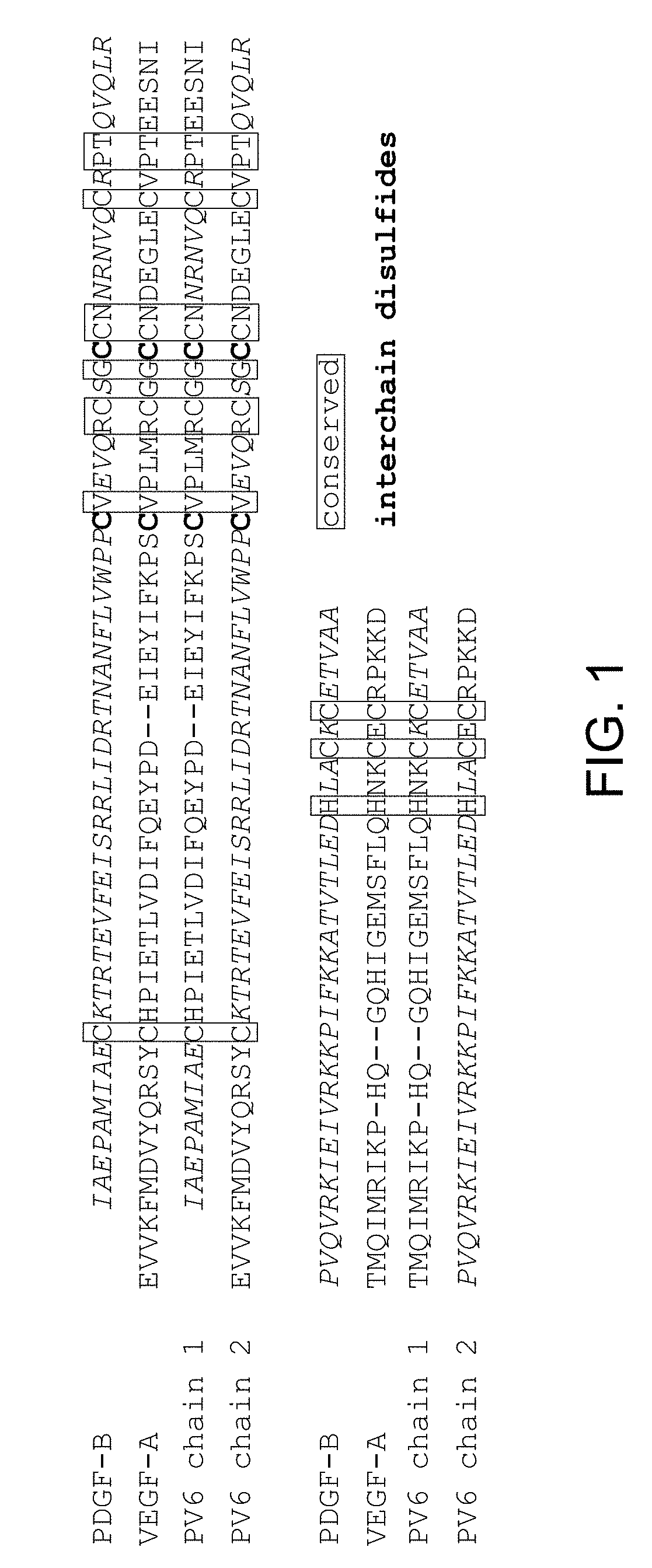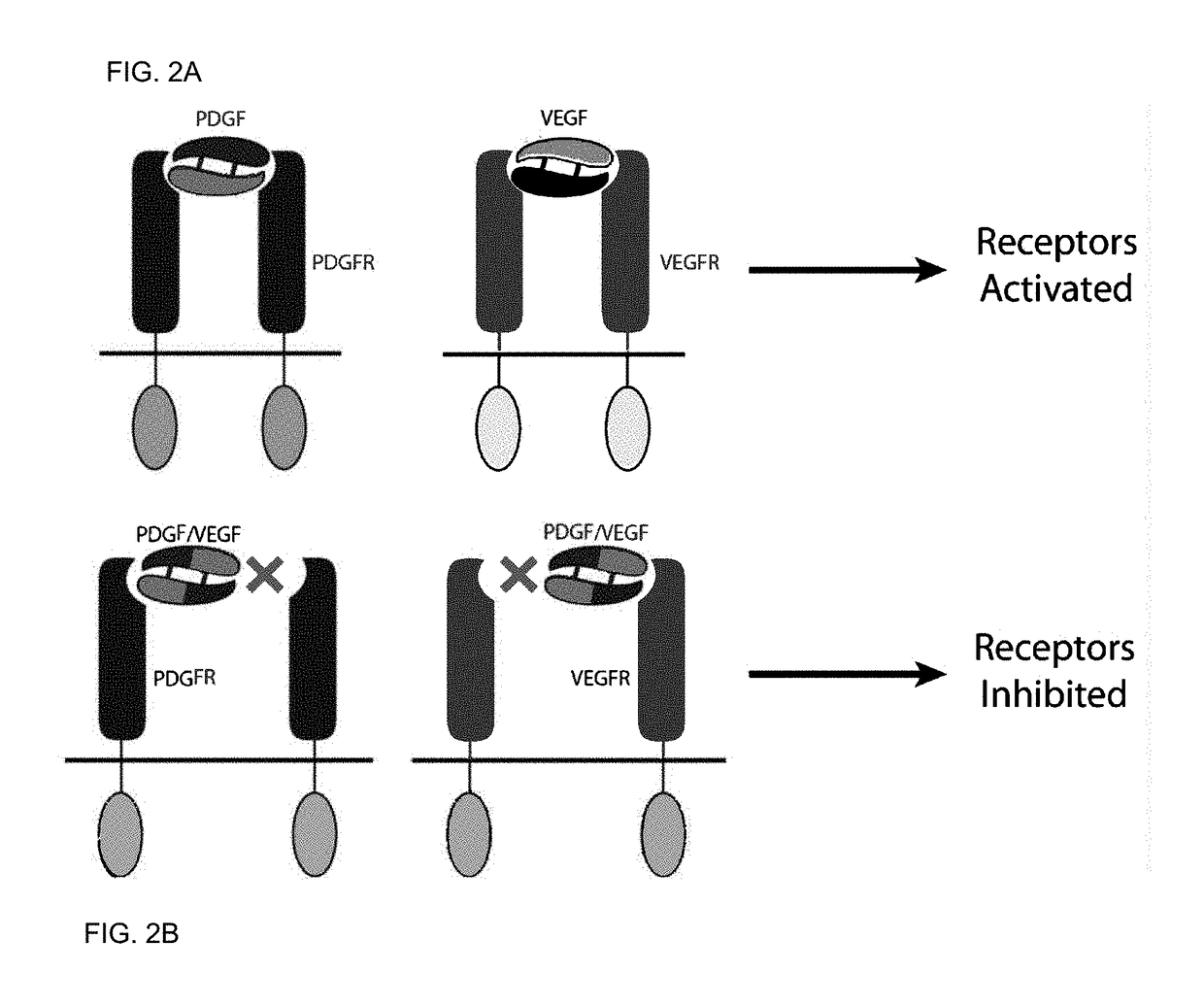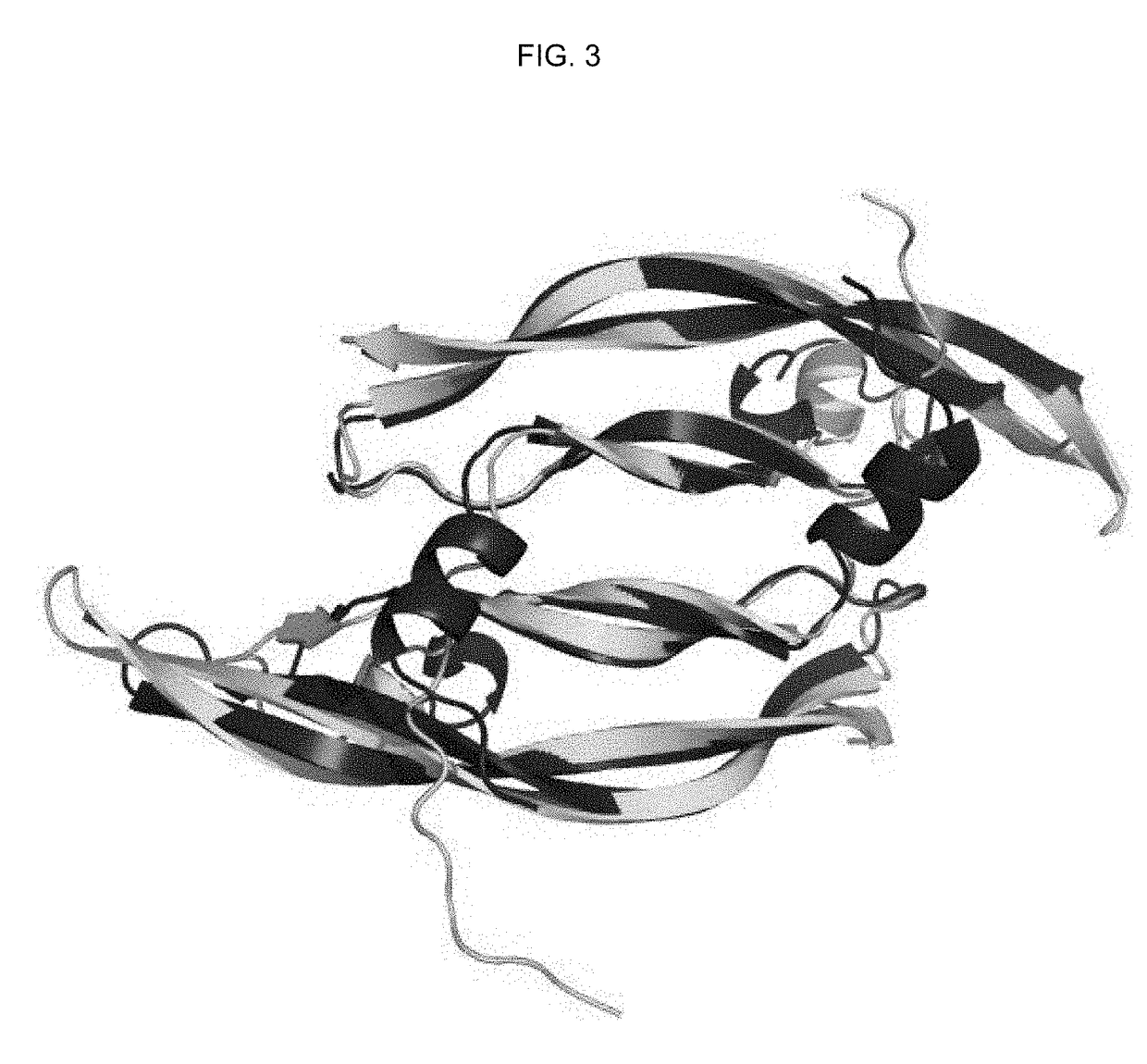Hybrid chimera polypeptides as dual inhibitors of vascular endothelial growth factor receptor and platelet-derived growth factor receptor
a technology of vascular endothelial growth factor and chimera polypeptide, which is applied in the field of angiogenesis related diseases and their diagnosis, characterization and treatment, can solve the problem of no fda approved drugs specifically targeting pdg
- Summary
- Abstract
- Description
- Claims
- Application Information
AI Technical Summary
Benefits of technology
Problems solved by technology
Method used
Image
Examples
example 1
[0225]PDGF and VEGF have two binding epitopes which allow them to bind and dimerize two molecules of PDGFR and VEGFR, respectively, promoting activation and downstream cell signaling (FIG. 2A). To create antagonists towards PDGFR and VEGFR, we engineered a molecule that has only one binding site to PDGFR and VEGFR and that prevents receptor dimerization and activation. A comparison of the VEGF-A and PDGF-B crystal structures indicate significant overall structural homology (FIG. 3). Hence, we used a novel approach of engineering a hybrid PDGF / VEGF with PDGF residues on one pole and VEGF residues on the opposite pole that can be used to target both PDGFR and VEGFR (FIG. 2B). Despite the high structural similarity between VEGF-A and PDGF-B (RMSD 1.7 Å), the two growth factors have highly variable primary sequences, with only 21.6% sequence identity. Additionally, the respective receptor binding interfaces of VEGF and PDGF spans both chains of the growth factor dimers.
[0226]Since the r...
example 2
[0230]The rationally-engineered hybrid polypeptide is expected to bind only one copy of PDGFR or VEGFR, (a design feature that confers antagonistic activity); thus, it will have weaker affinity compared to the native bivalent PDGF and VEGF proteins. It is desirable for a competitive antagonist to be able to effectively outcompete the strong affinity of endogenous growth factor (10 pM and 0.5 nM for PDFGR and VEGFR, respectively). Otherwise, high dosing is required to achieve therapeutic benefit. The PDGF / VEGF hybrid was thus engineered to have high affinity binding to both PDGFR and VEGFR.
[0231]Generation of yeast-displayed library: We used combinatorial methods to engineer the hybrid PDGF / VEGF to have increased binding affinity and a slower kinetic off-rate of binding to PDGFR or VEGFR. Error-prone PCR was used to create a library of 6×107 million variants that was displayed on the yeast cell surface.
[0232]Library screening with soluble PDGFR and VEGFR: Five or six consecutive roun...
example 3
Engineering Chimeric PDGF / VEGF that Binds and Antagonizes both PDGFR and VEGFR
[0253]PDGF-B and VEGF-A are part of the PDGF family of cystine knot growth factors. They share the same overall fold, and comparison of the two crystal structures show significant structural homology, with RMSD of 1.7 Å (FIG. 3). PDGF and VEGF have two binding epitopes that allow them to bind to two PDGFR and two VEGFR, respectively, leading to dimerization of the receptors and activation of downstream signaling. We used the structural similarity and the bivalent nature of the two growth factors to engineer a chimeric PDGF / VEGF with PDGF on one pole and VEGF on the opposite pole that can be used to target both PDGFR and VEGFR and antagonize both receptors (FIG. 2).
[0254]Despite the structural similarity between PDGF-B and VEGF-A, the two growth factors have highly variable primary sequences, with 21.6% sequence identity. Additionally, each growth factor is a disulfide-bonded dimer, and the receptor binding...
PUM
| Property | Measurement | Unit |
|---|---|---|
| pre-incubation time | aaaaa | aaaaa |
| pre-incubation time | aaaaa | aaaaa |
| pre-incubation time | aaaaa | aaaaa |
Abstract
Description
Claims
Application Information
 Login to View More
Login to View More - R&D
- Intellectual Property
- Life Sciences
- Materials
- Tech Scout
- Unparalleled Data Quality
- Higher Quality Content
- 60% Fewer Hallucinations
Browse by: Latest US Patents, China's latest patents, Technical Efficacy Thesaurus, Application Domain, Technology Topic, Popular Technical Reports.
© 2025 PatSnap. All rights reserved.Legal|Privacy policy|Modern Slavery Act Transparency Statement|Sitemap|About US| Contact US: help@patsnap.com



